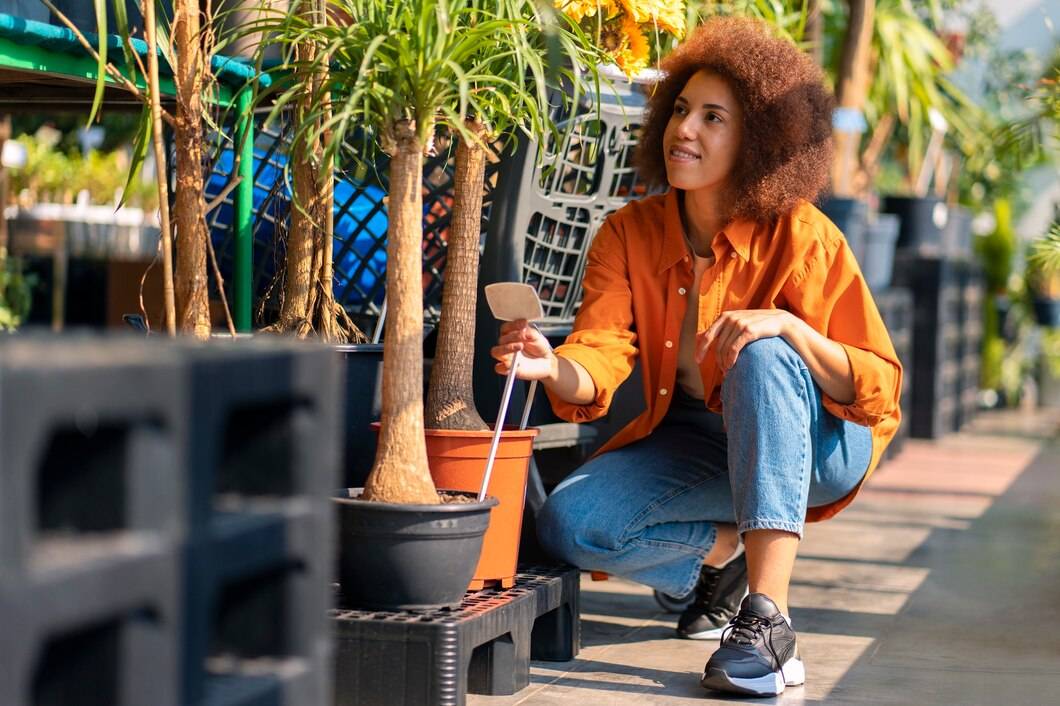In today's fast-paced world, stress has become a common issue. The constant barrage of information, responsibilities, and noise can leave us feeling overwhelmed. However, there's one place that can provide solace and rejuvenation—your very own garden. Whether you have a sprawling backyard or a small balcony, transforming a garden space into a retreat offers a sanctuary of peace, relaxation, and beauty. This blog post will guide you through the steps of designing the ideal garden retreat at home, from selecting the right plants to incorporating calming elements that soothe both the mind and body.
Section 1: The Foundation of a Garden Retreat
Subsection 1.1: Assessing Your Space
Before diving into the design process, it’s important to understand the space you’re working with. Whether it’s a large backyard or a small patio, every space offers unique opportunities and challenges.
Factors to Consider:
- Size and Shape: Identify the total area you can work with and the shape of the space.
- Sunlight: Determine how much sunlight the area receives. This will help you select the right plants.
- Soil Quality: Is the soil rich or sandy? Consider conducting a soil test to understand its nutrient levels and pH balance.
- Climate: Your local climate will affect what plants will thrive. Research your region's hardiness zone to choose suitable options.
Expanding the Space: Even a small space can feel expansive with the right design. Use vertical gardening techniques, hanging baskets, and wall-mounted planters to maximize your space.
Subsection 1.2: Defining Your Purpose
The first step in creating your garden retreat is deciding on its purpose. Do you want a space for relaxation, meditation, or entertaining? Or perhaps a blend of all of these?
- Calming Space: Consider a place with comfortable seating, natural elements like water features, and fragrant plants that promote tranquility.
- Edible Garden: If you're interested in growing food, design an edible garden with vegetables, herbs, and fruits. It’s both calming and practical.
- Entertaining Area: If you like to host, incorporate seating areas, outdoor dining spaces, and lighting that set the right mood for evening gatherings.
Section 2: Choosing the Right Plants for Your Garden Retreat
Subsection 2.1: Creating a Color Palette with Plants
Colors play a significant role in creating mood. Choose plants that evoke a sense of calm, like soft pastels, lush greens, and calming blues.
Flowering Plants:
- Lavender: Known for its calming scent and purple flowers, lavender is a must for any peaceful garden.
- Jasmine: Its fragrant white flowers can provide a sweet, soothing aroma.
- Roses: Choose pastel-colored roses or varieties like white or pale pink for a serene touch.
Foliage Plants:
- Ferns: Their lush, green fronds add depth and texture to your space.
- Hostas:Known for their calming blue and green hues, these plants thrive in shaded areas.
Ground Cover Plants:
- Creeping Thyme: This fragrant, low-growing plant can add texture to the floor of your garden while releasing a pleasant smell when stepped on.
- Moss: If you're aiming for a more meditative space, moss can bring an enchanting touch to paths and corners.
Subsection 2.2: Aromatic Plants for the Senses
The smell of your garden can greatly enhance the retreat experience. Plant aromatic herbs and flowers that not only look beautiful but also soothe the senses.
- Herbs:
- Mint, rosemary, and basil can be included in a herb garden or planted along walkways to create a sensory experience.
- Scented Flowers:
- Gardenias, lilacs, and honeysuckle provide delightful scents that fill the air.
Pro Tip: To maximize fragrance, plant these near seating areas or pathways where you’re likely to walk through them.
Subsection 2.3: Planting for Privacy and Seclusion
Your garden retreat should feel like a secluded oasis. Use plants that can help provide privacy and a sense of enclosure.
- Climbing Plants:
- Vines like ivy, wisteria, and climbing roses are excellent choices for trellises or fences.
- Hedges:
- Boxwood, privet, and holly are great options for creating natural privacy screens and boundaries.
Section 3: The Role of Water and Sound in Garden Retreats
Subsection 3.1: Adding a Water Feature
Water has a calming effect on the mind. Incorporating a water feature into your garden retreat can significantly enhance its tranquility. From small fountains to ponds, water creates soothing sounds that promote relaxation.
- Fountains: Simple or elaborate, fountains can be placed near seating areas to create calming sounds.
- Ponds: For a larger space, consider a koi pond or a natural swimming pool. These can be beautiful focal points.
- Birdbaths: Even a small birdbath can attract wildlife and bring the calming sound of water to your garden.
Subsection 3.2: The Soothing Power of Sound
Nature’s sounds—rustling leaves, chirping birds, and flowing water—are an integral part of any garden retreat. But if your garden is in a noisy area, you can enhance these sounds by strategically placing soundproof elements or adding other audio sources.
- Wind Chimes: Choose chimes made of bamboo, metal, or glass to produce gentle, harmonious sounds when the wind blows.
- Soundproofing: Use dense, leafy plants or wooden fences to block out unwanted external noise.
- Nature Sounds via Technology: If natural sounds are scarce, you can always use outdoor Bluetooth speakers to play calming sounds like rain, ocean waves, or birdsong.
Section 4: Creating Ambience with Lighting
Subsection 4.1: Soft, Natural Lighting for Evening Retreats
After the sun sets, your garden should still feel magical. Lighting is key to creating an enchanting atmosphere. Soft, warm lighting can make your garden feel cozy and inviting.
- Fairy Lights: String lights around trees, fences, or trellises for a whimsical, twinkling effect.
- Lanterns: Place lanterns along paths or around seating areas for a soft, warm glow.
- Solar Lights: Energy-efficient solar-powered lights can illuminate walkways or garden features without overpowering the space.
Subsection 4.2: Functional Lighting for Safety and Ambience
While soft lighting creates atmosphere, functional lighting is necessary for safety and practical use. Consider strategically placing lights for easy navigation.
- Pathway Lights: Install low-level lights along garden paths to guide your way at night.
- Spotlights: Use spotlights to highlight beautiful plants or garden features.
Section 5: Creating Comfortable Seating and Relaxation Areas
Subsection 5.1: Selecting the Right Garden Furniture
Comfortable seating is essential for making your garden retreat feel like an inviting sanctuary. Choose furniture that suits your space, climate, and design style.
Materials to Consider:
- Wicker or rattan for a cozy, rustic feel.
- Teak or cedar for durable, weather-resistant furniture.
- Cushions and throws to add comfort and warmth.
Design Options:
- Hammocks or swing chairs for ultimate relaxation.
- Benches placed under trees for shade and quiet reflection.
- Lounge chairs for sunbathing or reading.
Subsection 5.2: Outdoor Rugs and Pillows for Added Comfort
Don’t forget the little touches that make a space feel comfortable and inviting.
- Rugs: Outdoor rugs can help define areas and add texture and color to your garden.
- Throw Pillows: Soft, weather-resistant pillows add comfort and style to your seating.
Section 6: Incorporating Sustainable Practices
Subsection 6.1: Sustainable Gardening Practices
As you design your garden retreat, keep sustainability in mind. Eco-friendly gardening practices help conserve resources while maintaining a healthy, beautiful garden.
- Composting: Create your own compost bin to reduce waste and enrich your soil.
- Rainwater Harvesting: Install a rainwater barrel to collect water for irrigation.
- Native Plants: Choose native plants that require less water and maintenance.
Subsection 6.2: Eco-Friendly Materials
Opt for sustainable materials when building structures for your retreat.
- Recycled Materials: Use reclaimed wood or recycled metal for garden furniture, fences, and decor.
- Natural Paving: Choose permeable surfaces, like gravel or stone, that allow rainwater to soak into the ground.
Section 7: Maintaining Your Garden Retreat
Subsection 7.1: Seasonal Care
Maintaining a garden retreat requires ongoing care, but it doesn’t have to be overwhelming. Create a seasonal gardening schedule to keep everything in top shape.
- Spring: Plant new flowers, prune shrubs, and add compost to enrich the soil.
- Summer: Water regularly, deadhead flowers, and maintain healthy plants.
- Autumn: Prepare for the cooler months by clearing fallen leaves and mulching.
- Winter: Protect plants from frost and ensure any garden structures are secure.
Subsection 7.2: Sustainable Maintenance Tips
Keep your garden retreat looking beautiful without harming the environment by using eco-friendly products and techniques.
- Organic fertilizers: Opt for natural fertilizers over chemical ones.
- Natural Pest Control: Use beneficial insects or organic repellents to manage pests.
Your Garden Retreat Awaits
Designing the ideal garden retreat is an incredibly personal and rewarding process. By carefully selecting plants, adding calming elements like water features and lighting, and creating comfortable spaces, you can transform your outdoor space into a sanctuary of peace. Whether you seek relaxation, reflection, or connection with nature, your garden retreat is a place where you can nurture both your plants and your well-being.
As you embark on this journey, remember that the process itself is as fulfilling as the end result. The time spent planning, planting, and tending to your retreat offers valuable moments of mindfulness and serenity. Let your garden be your escape—a place where you can breathe deeply, reconnect with nature, and find peace.


